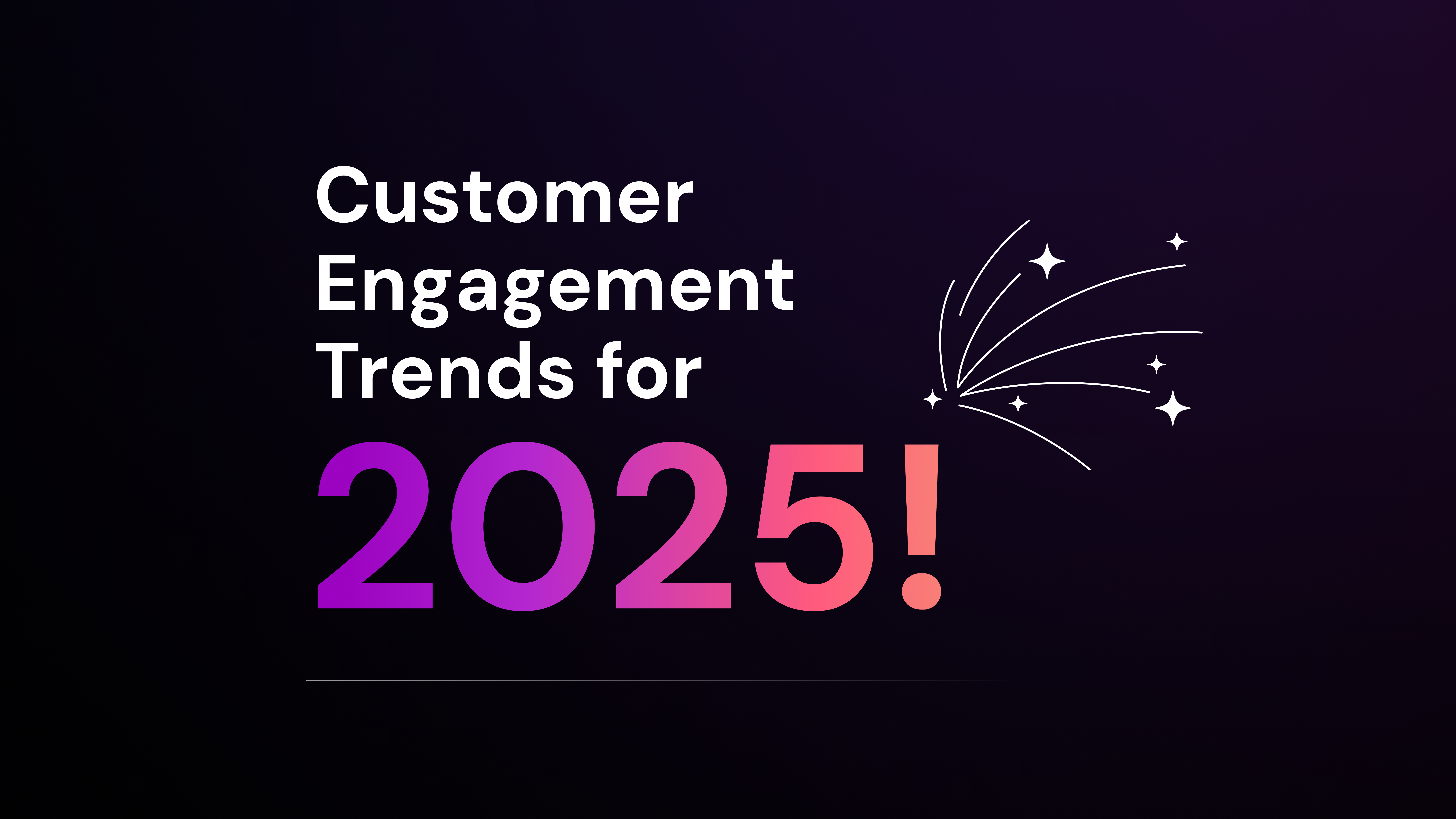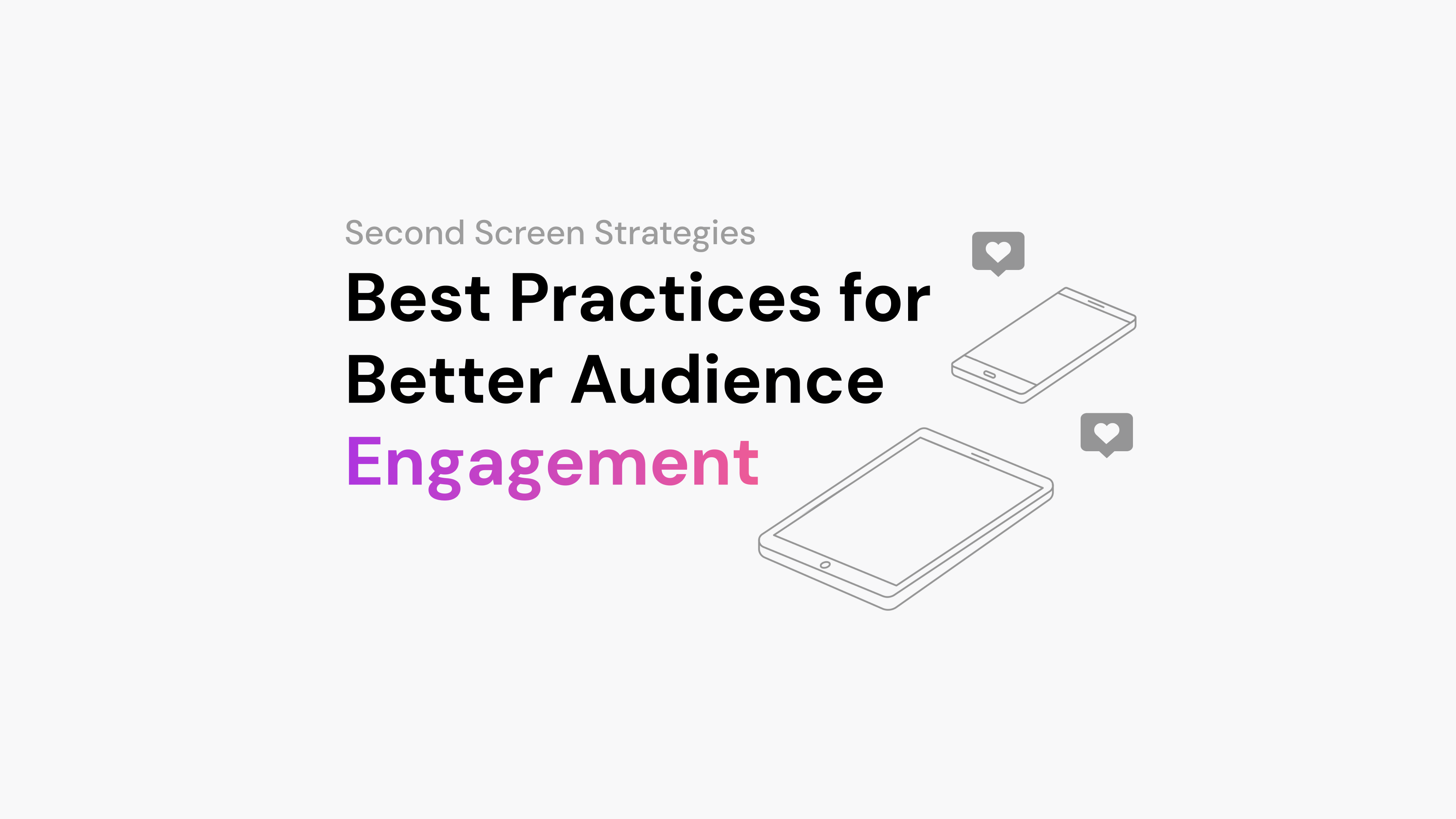Besides having more options to choose from, customers are more informed than ever about what to look for and expect from a brand or service. As their expectations grow, engagement strategies must also evolve to meet these demands.
Leveraging technology for hyper-personalized experiences, ensuring data privacy, and fostering accessibility will be the top customer engagement trends for 2025. Let’s delve into the key trends shaping how brands will connect with their audiences in the coming year.
Top 7 Customer Engagement Trends for 2025
1. AI-Powered Personalized Experiences
Hyper-Personalized Customer Journeys
A crucial component of customer experience is creating emotional bonds with your audience. Because each customer is different and will expect to interact differently with your brand, delivering these experiences would require double the work.
This is where Artificial Intelligence comes into play. Generative AI is revolutionizing how businesses approach personalization.
From tailored product recommendations to custom content delivery, AI enables brands to offer experiences that resonate deeply with individual customers. Companies can craft intuitive and unique customer journeys by analyzing browsing patterns, purchase history, and real-time interactions.
Predictive Insights for Engagement
Predictive AI tools help brands anticipate customer needs before they arise. For example, a retailer might suggest a seasonal product to customers based on previous purchases, or a media platform could recommend content aligned with user preferences. These anticipatory actions create seamless interactions that boost satisfaction and retention.
2. Data Privacy Takes Center Stage
Building Trust with Transparency
Users need to share sensitive data about themselves to give your team access to information that will help them offer hyper-personalized customer experiences and real-time solutions. Around 50% of customers are eager to share personal information with brands if they offer high-quality personalized experiences in return.
Although users aren’t reluctant to share their data, they care about data privacy and demand clarity and honesty from data owners and intermediaries.
Brands must prioritize clear, straightforward policies and visible security measures to reassure their audiences. Transparency isn’t just a regulatory requirement—it’s an opportunity to build trust.
3. Customer Accessibility: Information on Demand
Seamless Search and Summaries
Modern customers value convenience above all else. Besides having unrestricted access to AI chatbots that can deliver real-time information, customers can use Artificial Intelligence to find whatever they need in a matter of seconds.
Tools such as Arena’s AI-powered Feed Search and Feed Summary are game changers. By writing a prompt, customers can easily find what they need: event details, product specifications, answers to common questions, or a summary of everything published on your page.
Inclusive Experiences for All
Accessibility extends beyond speed. It also means ensuring your content is usable by everyone, including those with disabilities. Offering features like screen reader compatibility, multilingual options, and adjustable font sizes ensures all customers feel included and seen.
4. Interactive Engagement Across Channels
Real-Time Conversations and Feedback
Customers crave genuine interactions with each other and with the brand itself. Live chats, polls, Q&A sessions, forums, and live blogs are indispensable for fostering real-time engagement. These features create a two-way communication channel that builds trust and keeps customers invested in your brand’s offerings.
Strengthening Omnichannel Experiences
More often than not, customers interact with a brand at multiple touchpoints before actually deciding to purchase products or services. This is why modern engagement happens across multiple devices and platforms: to bring customers from channels such as social media to the brand’s website and app.
Customers expect a seamless journey, starting on a mobile app, continuing on a desktop site, and perhaps concluding via email. To meet these expectations, brands must prioritize consistency and integration.
5. Valuable Loyalty Programs for Long-Term Success
As economic uncertainty hits brands and customers alike, there’s a greater demand to emphasize proven marketing strategies. Acquiring new customers may be challenging, so keeping current customers will become even more critical.
Emotional Loyalty Beyond Discounts
Loyalty programs are evolving from transactional to emotional. Around 79% of consumers say that a company’s loyalty program increases their chances of doing business with it.
Beyond points and discounts, customers seek unique rewards, such as early access to new products, personalized perks, or exclusive content. Many companies take this one step further, personalizing their programs by adding a hierarchy of loyalty status. These thoughtful gestures strengthen the bond between the brand and its audience.
Leveraging Data for Better Rewards
AI-driven analytics can enhance loyalty programs by identifying what truly matters to customers. For instance, a frequent traveler might appreciate free upgrades, while a regular shopper might prefer early access to sales. Data-driven insights ensure loyalty programs deliver real value.
Reinforce Your Loyalty Program
In 2023, Starbucks announced changes to its loyalty program that devalued loyalty program points. In the past, airlines have made similar changes. Such changes make it harder to retain loyal customers. Also, such changes generate negative publicity that makes engagement far more complex.
If you want to retain existing customers, consider maintaining and improving your loyalty program without making any abrupt changes that might alienate your loyal base. Instead, focus on enhancing rewards, creating personalized offers, and actively communicating the benefits of staying engaged with your brand.
6. Attract Potential Customers with Events

Enjoying food and drinks with your customers is a powerful way to build relationships. However, traditional events require significant investment. Spending $20,000 or $100,000 on traditional events or conference participation might not be feasible this year.
Focusing on virtual events is an alternative to high-cost traditional events. Since online events don’t include costs such as venue booking, they are often much faster to run. Offering your registered users exclusive access to your online events is one compelling way to convert more browsers into customers.
To make the most of your online events, ensure you give your audience a way to connect and share feedback. Arena Live Chat makes it easy for users to ask questions, share thoughts, and meet others.
If you want to stay ahead of the curve and drive better results with virtual events, check out our guide to the top 2025 virtual event trends.
7. Community-Driven Engagement
Building Spaces for Connection
Strong communities foster loyalty and advocacy. Customers value platforms where they can connect with like-minded individuals, share feedback, and learn. Tools like Arena Community make it easy for brands to set up communities in a matter of minutes, making it easier than ever to build these exclusive spaces and offer great customer experience.
Leveraging Community for Website Monetization
In addition to using communities to engage with customers in a somewhat exclusive environment, brands and creators can leverage their customer communities to increase website monetization.
By centralizing your fans in a single platform, you can leverage branded content, conversion cards, and personalized ads to help convert passive users into active customers.
Learn how to build online communities and revolutionize customer engagement on our complete guide.
Final Thoughts
Customer engagement in 2025 will revolve around creating personalized, secure, and accessible experiences. By embracing tools like Arena’s engagement platform and staying ahead of these trends, brands can deepen connections, foster loyalty, and deliver exceptional value. As customer expectations continue to rise, businesses that innovate and prioritize their audience’s needs will stand out in a competitive landscape.



